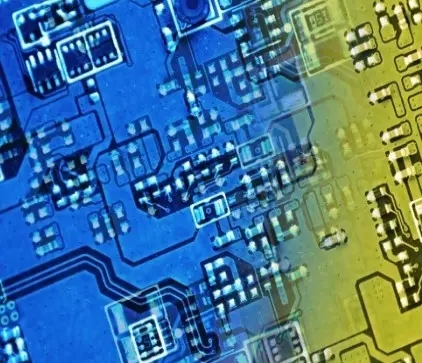
Precautions for PTF printing on PET
The circuit board manufacturer and circuit board designer explain the precautions for PTF printing on PET
As we all know, compared with FPC, PTF soft plate does have many advantages such as low prICe and short delivery time, but PTF has its previous capacity limitations. Due to the screen printing process, PFT cannot make the electronic circuit spacing SMAller than FPC. Although it claims that the minimum electronic circuit spacing of 5mils (0.12mm) can be achieved, in fact, 10mils (0.25mm) has reached the limit. In addition, PTF cannot withstand the folding in half, because its electronic circuit is made of silver paste and conductive carbon, and its door is not as malleable as the copper circuit of FPC, which can withstand a few times of bending.
Based on personal experience in using PTF, we will propose the process capability limitations and solutions for PTF production.

Foreign matter contamination: if a non-conductive foreign matter (particle) sticks to an electronic circuit, its minimum effect is to increase the resistance value of the circuit, because the resistance value is inversely proportional to the area through which electrons pass, and is likely to cause an electrical open circuit (open); If a conductive foreign object contaminates the circuit and between circuits, it is likely to cause an electrical short circuit. This disadvantage is most annoying, because when the Circuit board manufacturer manufactures the circuit board, it cannot be completely screened through the test method. Usually, it will not cause problems until it is instalLED in the product for a period of time, especially when it is used in areas with high temperature and humidity. In the future, if you have the opportunity, you can write another article to discuss this topic.
Foreign matters may come from the air in the environment, including dust, fiber, paper scraps, etc. Generally speaking, they are man-made foreign objects. For example, there are many fibers on clothes, especially sweaters or cotton clothes. Waleng cartons are also a major source of pollution, including wool, paper scraps and fibers. The best prevention and control measure is to set up a 100K level clean room, with personnel wearing dust-proof clothes, and strictly control all possible pollution sources. The importance of environmental control, especially in the production of products with small spacing lines.
Another possible source of foreign matters is ink. Some additives of metal components will be added to the ink during its production. If these additives are not properly controlled, they may form hard blocks. Larger hard blocks cannot flow through the mesh of the screen printing, which will block the mesh of the screen printing, resulting in the lack of holes in the printing brush, or even the disconnection of the electronic circuit; Smaller hard blocks can flow through the mesh, but will form bumps on the electronic circuit. If there are overlapping upper and lower layers of circuits, the bumps are likely to break through the dielectric layer, causing short circuits in the upper and lower circuits. The pollution of printing ink may also come from the bad ambient air during printing ink production or the environment where printing ink is stored. The best way to control ink foreign matters is to filter ink contamination with a filter screen of appropriate size; If the contamination is serious, the coarse filter screen can also be used first and then the fine filter screen.
Printing contamination of conductive layer: During screen printing, the viscosity of conductive ink is very important. When too much thinner is added, the ink will become thinner and become easy to penetrate to the place where the ink should not have been printed. This disadvantage is called printing contamination. What's worse, this contamination will last until the next printing, or even the next time, until the contaminated ink is exhausted. Serious printing contamination will directly cause short circuit between adjacent conductive lines; Slight printing contamination may also affect the electronic flow between lines. If voltage is used as energy and humidity is used as catalyst, electronic migration is likely to occur between lines. As time goes on, conductivity will occur and short circuit will occur.
The first method to solve the printing contamination of the conductive layer is to select appropriate ink and control the addition of thinner; The second is regular cleaning screen; The third is to strengthen the inspection. It is better to check one piece every time it is done. It would be better if there is an AOI (Auto Optical Inspector).
printing holes and holes in the insulation layer: The screen plate is composed of warp and weft lines. Since it is composed of lines, there will be places where the lines cannot be printed during printing, especially at the intersection of warp and weft lines, there will be holes that cannot be printed. These holes are very small and difficult to observe with eyes, but electrons may still pass through. If the holes just fall on the conductive lines of adjacent layers, It will cause short circuit between layers.
The solution to the problem of printing holes and holes in the insulating layer can reduce the viscosity of the insulating layer ink, so that the insulating ink can penetrate under the warp and weft lines (※ Please note: do not confuse the increased viscosity of conductive ink with the reduced viscosity of the insulating layer). Another method is to increase the number of times of insulation layer printing by 2-3 layers, and specify that each insulation layer uses silk screen plates with different meshes and longitude and latitude directions, so that different screen plates can fill holes in each other.









